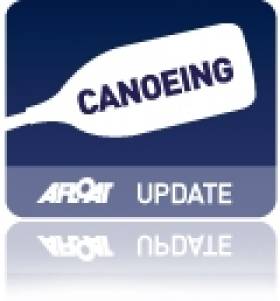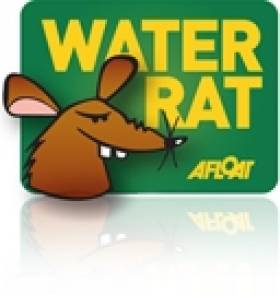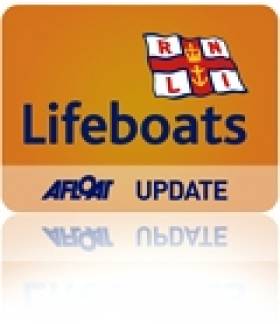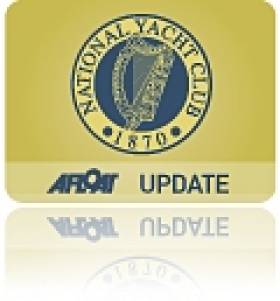Displaying items by tag: Peter
Ireland Canoeists Lose Time on Portages at World Championships
#CanoeMarathon2013: Ireland’s Jenny Egan and Peter Egan finished 15th and 19th respectively at the Canoe Marathon World Championships at Lake Bagsværd, Denmark, today. Jenny Egan started promisingly but was knocked back by her performances on the portages.
Peter Egan was generally faster on his portages on his paddle, but did lose control of his boat on one and lost time.
Last year, in Rome, Peter Egan finished 17th and Jenny Egan 16th.
Canoe Marathon World Championships, Lake Bagsværd, Denmark (Irish Interest, Selected Results)
Men, K1 (30.1 km): 1 H McGregor (South Africa) 2 hourse 10 mins 34 seconds; 19 P Egan (Ireland) 2:15.26.
Women, K (25.8 km) 1: R Csay (Hungary) 2:01.26; 15 J Egan (Ireland) 2:09.23.
Offshore Sailors Consider 'Virtual Marks' for 2012 Fixtures
Taking a lead from this year's Lyver offshore sailing race, when Liverpool Yacht Club used a "virtual" waypoint as a mark on the course, ISORA may include this type of mark in future races, that's according to Commodore Peter Ryan. His comments come in a plea to members for feedback before the 2012 ISORA calendar is set at the ISORA agm on November 19th. Virtual marks would be a means to ensure that the offshore fleet get true upwind legs and still have reasonable length races.
It would, says Ryan of Dun Laoghaire's National Yacht Club, also facilitate the shortening of the day races. 'We have been around Rockabill so often over the last few years that the bird life there think we are residents!' he adds.
Are Two Medals a Realistic Expectation from Weymouth?
Afloat opinion: The recent results in World Cup sailing regattas will give rise to considerable optimism in Irish sailing circles that David Wilkins and Jamie Wilkinson's successful performance in the boycott affected 1980 Olympics may be repeated. There have been pretenders to the throne in intervening years – O'Hara, both Lyttles, Mansfield and Burrows are among the names that have quickened the pulses only to be found wanting in the pressure cooker that is the Olympic regatta.
In the previous era there was talk of saving performances for key events – peaking so to say. Nowadays the leading sailors bring their "A" game to every regatta and the consistent nature of the performances being recorded by Annalise Murphy and Peter O'Leary, notwithstanding the changes of crew in the Star class, suggests that this summit has been reached.
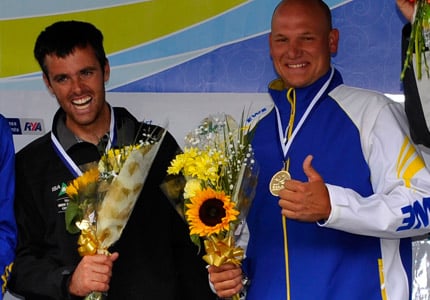
Peter O'Leary (left) wins Gold in 2010. Photo: OnEdition
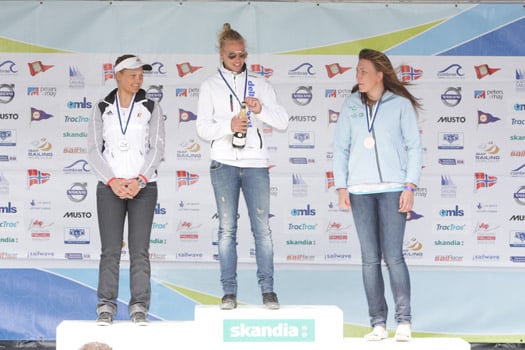
Annalise Murphy (right) wins bronze in 2011. Photo: OnEdition
Murphy's progression in the last few years has been extremely impressive. An eighth place at the Laser Radial Worlds in 2009 preceded a successful period on the Australian circuit with a subsequent progression into the world's top ten. In her last two world cup regattas she has finished fifteen times in the top ten and has won ten races. Her win rate at the Skandia Sail for Gold regatta on the Olympic course was matched only by Ben Ainslie. Inconsistency prevented her from taking first place in both events.
The Star class is studded with achievers, and the top of the fleet is currently littered with Olympic Medallists and World Champions in a number of classes. That the Irish team can compete at this level is beyond doubt, winning at Skandia Sail for Gold last year and finishing 2nd by one point at the Bacardi Cup.
That all three athletes are outstanding sailors may have something to do with their sailing steeped DNA. Additionally, the Star pairing have Olympic experience, although not together. While it may be paradoxical to suggest that in certain circumstances such background and experience might not be 100% positive, the sailing team management will need to set out their stall in an early and positive plan which has buy in from all the connections, clearly defining roles and responsibilities.
The plan must also identify the work necessary to eliminate the inconsistencies that have prevented regular and frequent podium performances. Whether it is course management, tactical decision-making or boat speed (not a problem in certain conditions), it is not a time to be faint hearted in regard to ensuring that the best possible specialist coaches are employed to work on these areas. The ISA management team will need to understand their own strengths and weaknesses, using all the resources available, particularly those provided through the Institute of Sport, so that two medals can be a realistic achievement in Weymouth. Peter, David and Annalise deserve no less.
Comment on this article by writing to us HERE.
Bangor Lifeboat Reunite Missing Child with Parents
Belfast Coastguard received the initial call for help and requested RNLI Bangor Lifeboat to launch immediately and start searching the shoreline between Lukes Point and Ballyholme Bay.
Within minutes of the rescue pagers being activated volunteer crew at RNLI Bangor Lifeboat had assembled and launched the lifeboat.
Knowing that this type of rescue was time critical, volunteer crew not on board the lifeboat proceeded on foot and by bike to the Ballyholme Bay area.
Thankfully one of the RNLI volunteers on shore spotted the young boy ½ mile from the initial search area and was able to reunite him with his parents.
Peter Semple the volunteer crew member who found the young boy said. 'We are extremely happy and relieved that the young boy has been found'. He added 'We were delighted to reunite him with his parents'.
Related Safety posts
RNLI Lifeboats in Ireland
Safety News
Rescue News from RNLI Lifeboats in Ireland
Coast Guard News from Ireland
Water Safety News from Ireland
Marine Casualty Investigation Board News
Marine Warnings
National YC Recruits New Club Manager
In a message to members this week Commodore Peter Ryan said Conneely 'has been a huge part of the Club for 21 years and it will be a difficult task to find a replacement of his quality and commitment'.
The newspaper advertisement says the successful candidate 'will have a strong hands on approach to managing a tight knit, highly motivated team of professionals'.
Applicants are requested to email [email protected] before March 1st.


























